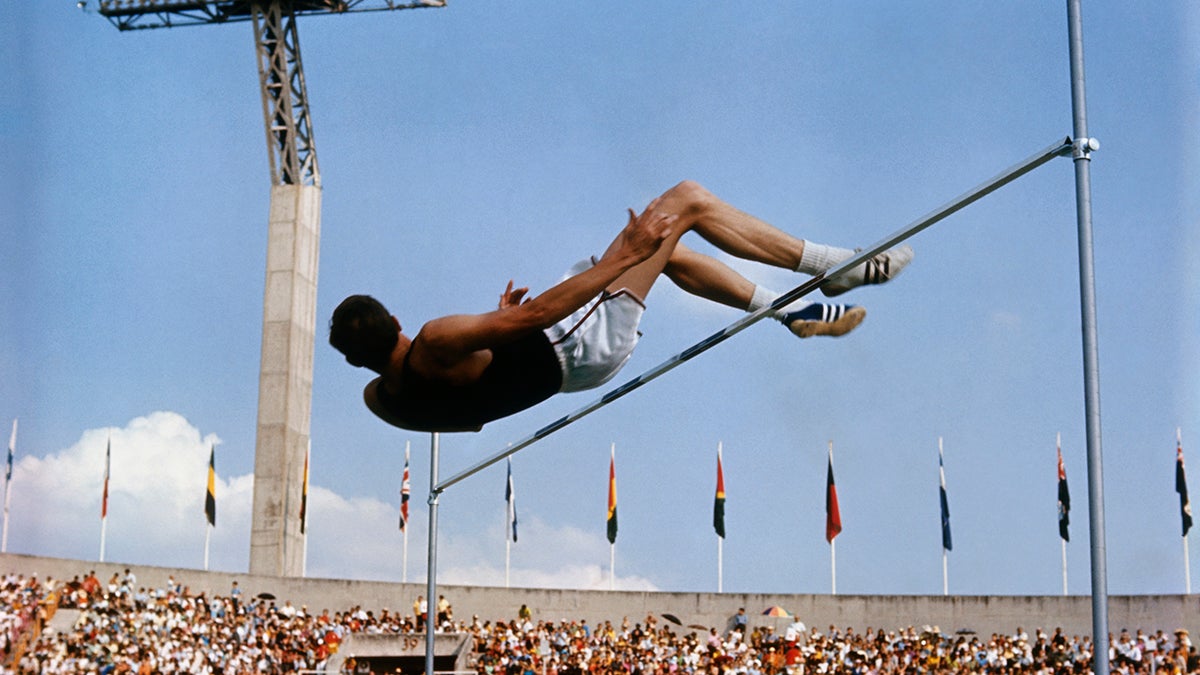Trial and error: How Dick Fosbury revolutionized the high jump
Why this matters
In 2018, Global Sport Matters and the Global Sport Institute commemorated the 50th anniversary of the seminal moment of the Mexico City Games, when Americans John Carlos and Tommie Smith raised a black-gloved fist from the medals podium. We took a look back at the year from a global sporting perspective.
From the World Series helping a wounded Detroit heal to athletic innovations that trace their origins to those Olympics, 1968 served as a critical pivot point in the role sports plays in society and introduced the modern era of athlete activism. Read all the stories here.
Sometimes, the revolution starts when one door closes and another opens. For Oregon State University engineering student Dick Fosbury, his revolutionary change in the high jump stemmed not from desire, but because he didn't make the high school football team.
“Fosbury was remarkable in being unremarkable, the essence of average,” author Bob Welch wrote in the biography “The Wizard of Foz.” “He wasn’t a great athlete; he wasn’t a bad athlete. He wasn’t a great student; he wasn't a bad student. He wasn’t a hellion; he wasn’t an angel.”
Fosbury’s jumping career began in high school after he was told he was not big enough to join the football team and not skilled enough to join the basketball team. The recent biography described him as a kid just trying to find a place to fit in.
His last attempt at sports was track and field, and even then he struggled to find a place. The two common methods of jumping before the 1968 Olympics were the straddle and scissor jumps. The most popular style, the straddle jump, consisted of approaching the bar from the inner foot and crossing the bar face down in a straddle position. The scissor technique involved running at a slower speed and having the outer leg going over the bar first, enabling the jumper to land on their feet.
High school coaches urged Fosbury to train with the straddle method, but he could never break his ninth-grade record of 5 feet, 4 inches. The scissor technique allowed slightly better results, so the coaches gave him the OK.
The scissor method, however, worked only slightly better for Fosbury. He began experimenting with it at the end of his sophomore year in high school. In his junior year, he broke his high school’s record with a 6-3 jump with his modified scissor technique. Fosbury, however, would tend to land on his back when he jumped using the flop.
Fortunately for Fosbury, a new development was breaking through in the high jump world: foam rubber pads. Previously, sawdust, sand or wood chips were used as the landing area material because straddle jumpers landed on their feet and scissor jumpers landed on their hands and lead foot. Once foam landing pads went into widespread use, Fosbury could land on his back without consequence.
Fosbury’s high jump career continued at Oregon State, where he studied engineering. His coach there suggested he return to the straddle method, but Fosbury couldn’t make it work any better than when he tried it in high school. Using his own technique, Fosbury broke the school’s record in his sophomore year with a 6-10 jump. The Olympics, once an unreachable dream, drew within reach.
At age 21, Fosbury traveled to California to compete in the Olympic trials. He blew the other competitors away with a 7-1 jump, guaranteeing him a spot on the team. Not long after, he was standing on the Olympic podium with a gold medal around his neck.
The global audience sat staring at what had just happened. Was that style even legal? Where did he learn how to do that? Fosbury’s style made him look like a fish out of water as he sailed over the bar. The judges weren’t sure if such a jump was allowed, but there was nothing in the rule book saying it wasn’t.
“It was something he created himself and really caught the world by surprise,” said Greg Kraft, Arizona State University’s coach of track and field jumps. “I think if (the judges) had known about it, perhaps it wouldn’t have been legal. It was such a revolutionary technique.”
Fosbury claimed the gold medal and set an Olympic record at 7-4. Three jumpers cleared 7-2½, but the Soviet Union’s Valentin Gavrilov reached his max there and took the bronze. At 7-3½, Fosbury’s teammate Ed Caruthers was eliminated and earned the silver.
Originally described as a back layout, the technique was soon given the “Fosbury Flop” name by fans in his hometown.
Fosbury returned to Oregon State after the games to finish his engineering degree. With school taking precedence, Fosbury let his high jump days fade into the background. He participated in the trials for the 1972 Munich Games. While he didn’t make the cut, his legacy did.
In the 1972 Games, 28 of the 40 competitors used the Fosbury Flop. Today, straddles and scissors are a thing of the past.
“You would be hard pressed to find somebody who doesn’t use the flop technique,” Kraft said of high jumping in the modern era.
For a kid who was known for being remarkably unremarkable, Fosbury broke through the bar others had set for him and left a legacy that changed the sport forever.
Nikole Tower is a senior journalism student at Arizona State University


